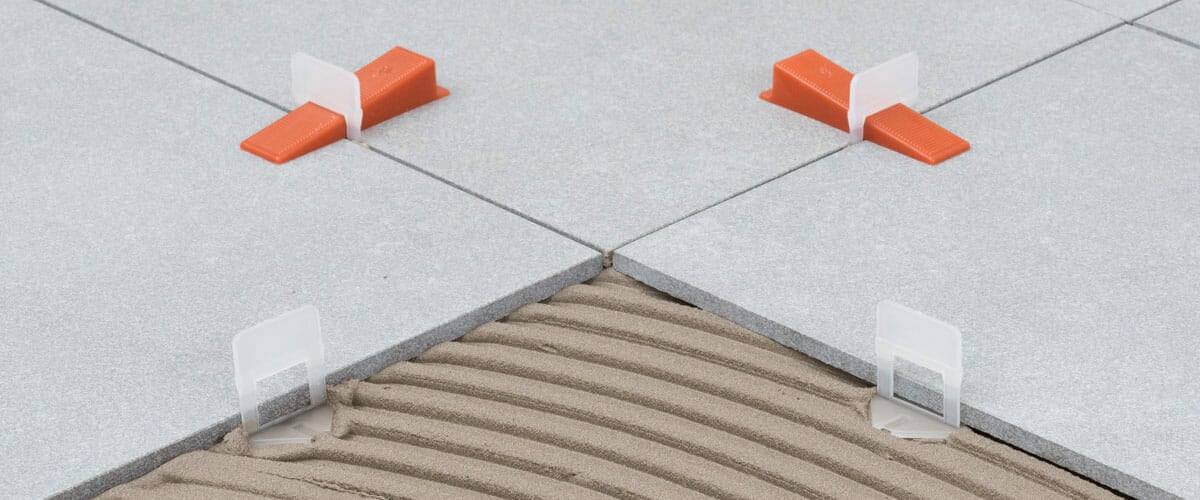The quick answer is nothing closer than 1/16th If you want to know why please keep reading.
When re-modeling floors, bathroom or a kitchen almost everybody wants to have the smallest size grout lines between their tiles. Some even want to install their tiles with no grout at all.
Since this is what all customer request from the installer, most installers, and contractors find pride in very close grout lines and they consider it a sign of a high-quality job. Only a few who can separate the look from the longevity would say: No! Tiles cannot be put too close.
Before we go ahead and explain, let’s see the definition of grout.
What is Grout?
According to Merriam-Webster, Grout is a thin mortar used for filling spaces (such as the joints in masonry)
We need to fill the space between tiles to prevent any liquid from sipping through the tiles and to avoid humidity that will eventually cause mold and mildew.
Installation With No Grout
Today car keys are little electronic remote controllers that function with battery. They are designed air-thigh to keep the dust out.
A little ago, I had to change my car key’s battery. When I popped it open, I was amazed by the amount of dust I found inside of it.
When we install with no grout, tiles are not airtight, and they are in direct contact with water.
Can you Imagine if In three year’s time a significant amount of dust from the air can get into an airtight car remote, how much water will go to the underneath the tiles that are not air-tight?
When the water gets underneath, it causes humidity. Then, the humidity creates mold and mildew.
If you bought marble, limestone, travertine or any sort of natural stone installed with no grout, your stone most likely has changed color. It didn’t happen because natural stone is bad. It simply happened because of mold and mildew created by the excessive amount of humidity underneath your tiles.
What’s the smallest size grout lines for installation?
Every manufacturer recommends 5/64″
Smallest size grout lines should not be less than 1/16″. This is an acceptable space that can be properly grouted. When the space between tiles is so little like 1/32″ which is often referred to as “credit card lines” or “penny lines”, it’s not possible to fill that space all the way through the bottom of the tile. In such a case, grout pops up leaving little holes in your floor.
Today, there are high-tech grout types that don’t stain and clean easy. Besides, we are able to choose a similar gout color to our tile that won’t be noticeable.
If this is not enough and you insist on having a very little seam, the proper way to reduce the seam is to use a tile larger than 24″x24″. Not eliminating the grout that protects your floors.
Best Selling Porcelain Tiles
-
 48×48 Urban Gray$4.49 – $5.99
48×48 Urban Gray$4.49 – $5.99 -
 24×48 Miami White Polished$4.99
24×48 Miami White Polished$4.99 -
 8×64 Colorado Ash$5.49
8×64 Colorado Ash$5.49 -
 48×48 Lithium Pearl Polished$6.99
48×48 Lithium Pearl Polished$6.99 -
 24×48 Fibre Bianco$5.19
24×48 Fibre Bianco$5.19 -
 32×32 Snow White Polished$5.29
32×32 Snow White Polished$5.29





You should only go down to a 1/16″ grout line if the tile is rectified, which ensures each is the exact same dimension, and with very careful installation. Otherwise, the slight variance in the tile size may produce a “wavy” look which can be hidden with larger grout line because you can adjust for the variance. Most manufacturers suggest a minimum 3/16″ grout line for pressed tile.
Peter, thank you for your contribution. Except few close-out tiles that we still have, all our tiles are rectified and we’re considering rectification as an industry standard. All we “in deed” want to do is to warn customers for groutless and 1/32″ (what’s called credit card lines) applications. Whereas, most factories recommend 2mm grout joints but it’s okay to go as close as 1/16″